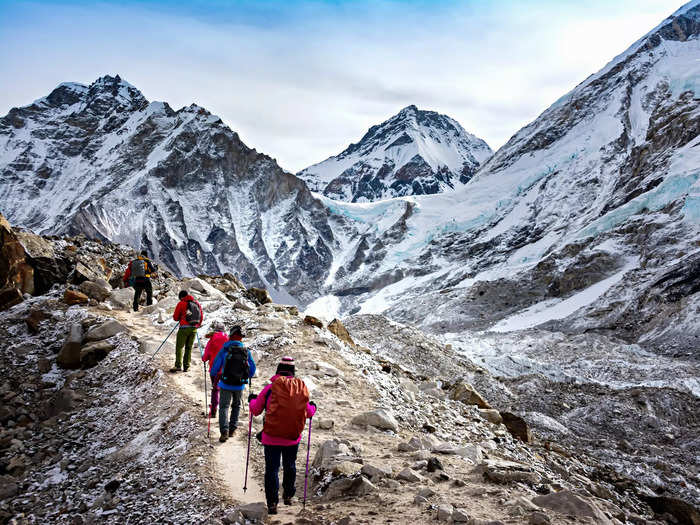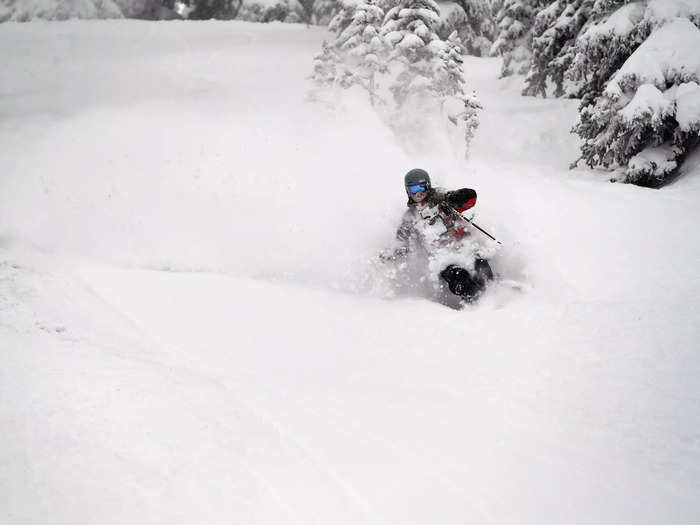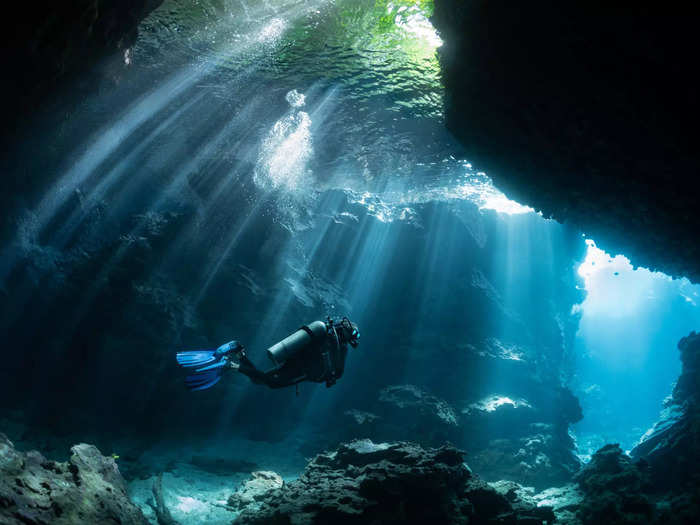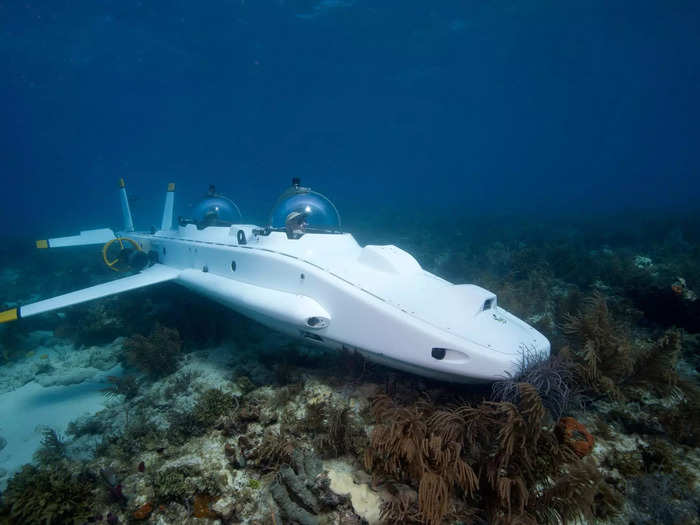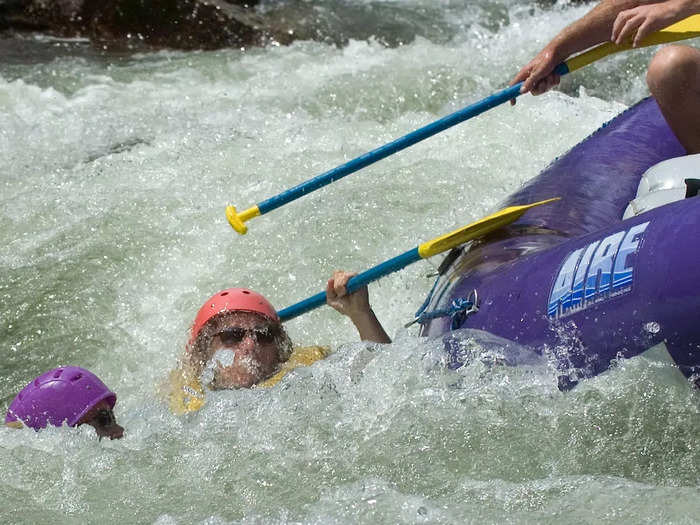Mountain climbs and glass bridge walks are tourist activities that come with risk.Kriangkrai Thitimakorn/Getty Images/MediaProduction/Getty Images
- A glass bridge panel in Indonesia broke on October 25, killing a tourist.
- Risky tourist attractions like mountain climbing and underwater cave diving have caused deaths, too.
A glass panel fell from a suspended glass bridge in Indonesia on October 25, killing a tourist, Insider reported.
The popular tourist attraction in the Limpakuwus Pine Forest was 32 feet above the ground and authorities accused the construction company that made it of using thin glass that wasn't tested for safety, per the article.
In the past, other glass bridges around the world have caused safety concerns as well. In May 2021, wind shattered glass panels on a bridge in China, leaving a man stranded on the structure.
But walking across glass bridges isn't the only daring activity people might do while traveling. Here are the activities that can be dangerous — and even deadly — for tourists.
Limited oxygen, altitude sickness, and overcrowded trails can make mountain climbing a risky activity.
Hikers walk to Everest Base Camp during Everest Base Camp trekking in Nepal. Kriangkrai Thitimakorn/Getty Images
Some mountains are more dangerous and deadly than others.
While Mount Everest may be the world's highest mountain, it's not the most dangerous. That title belongs to Annapurna I, according to NASA's Earth Observatory data, which is the 10th highest mountain in the world, followed by the mountain K2, where climbers were forced to climb over a dying man in August of this year.
You can read about the deadliest mountains in the world here.
Skiing and snowboarding can cause avalanches.
Crested Butte ski patroller Jason Holton skies through the remnants of an avalanche bomb in January 2017. Helen H. Richardson/Getty Images
When it comes to snow sports, the more people on the mountain, the higher the risk is for an avalanche.
In 2021, Insider reported an increase in skiers and snowboarders led to more avalanches, which can be deadly. According to the Colorado Avalanche Information Center, there were 30 deaths on the slopes in the 2022-2023 winter season — 10 of them were skiers, and three were snowboarders.
Underwater cave diving can be risky due in part to a lack of natural light.
Underwater cave diving is a risky activity. Michael Zeigler/Getty Images
Underwater caves are fascinating, but diving down them can be dangerous, especially for inexperienced participants.
For example, at least 12 divers since 1981 have died in Eagle's Nest Cave in Florida, known as the "Mount Everest" of underwater cave diving, Insider reported in 2018 in a story about dangerous tourist attractions.
One reason the risks of underwater cave diving are unique to other types of dives is the lack of natural light, Chris Haslam, a RAID technical diving instructor, told travel publication The Culture Trip in 2018. The darkness can make it easier to get lost, Haslam said, which is dangerous since divers have a limited oxygen supply.
According to the National Library of Medicine, 161 people died in underwater caves between 1985 and 2015.
Earlier this year, a submersible got lost on an expedition to the sunken Titanic.
A submarine on a coral reef. Getty Images
In 2023, the whole world was watching after the Ocean Gate Titan submersible that was headed for the sunken Titanic went missing. Four days after losing contact with the submersible on June 18, the US Coast Guard said the vessel likely ran out of oxygen. The Coast Guard found the submersible's debris near the Titanic site and predicted that the vessel imploded.
While boarding a submarine or submersible always comes with risk, fatalities are uncommon, Mckenzie Margarethe, a marine naturalist who used to be a copilot for Atlantis Submarines, told the travel magazine AFAR in June.
According to the same article, Ocean Gate didn't have the Titan submersible tested and certified for safety.
Tourists interested in traveling in a submersible or submarine should research the companies first and make sure their vessels have been certified with a third-party classification group, such as DNV or Lloyd's Register.
Tourists can soon travel to outer space, but they could be taking a health risk.
A Blue Origin New Shepard rocket launches from Texas in March 2022. Patrick T. Fallon/AFP via Getty Images
Traveling to space is complicated, and many of the dangers remain unknown. But that hasn't stopped the space tourism industry from launching.
Companies like Blue Origin and Virgin Galactic getting ready to take wealthy travelers to space. However, according to NASA, one thing we do know is that going to space exposes humans to radiation, which can lead to cancer and heart disease.
White water rafting is a popular activity, but river currents can be dangerous.
White water rafters struggle in the Arkansas River. RJ Sangosti/The Denver Post via Getty Images
White water rafting is an adventurous activity that is especially popular in Colorado, according to Insider's story about dangerous tourist attractions in 2018.
But travelers should be aware of the risks they're taking when cruising a river on a giant tube. Melting mountain snow can lead to dangerously rapid river currents. White water rafters risk injuries from rock collisions. According to Fox 31 Denver, 34 people died on Colorado waterways between 2014 and 2016.
It's not just Colorado. According to The American Whitewater Accident Database, over 670 people have died or been injured on river rafts in the US since 1956 in a wide variety of states, from Oregon to Tennessee.

